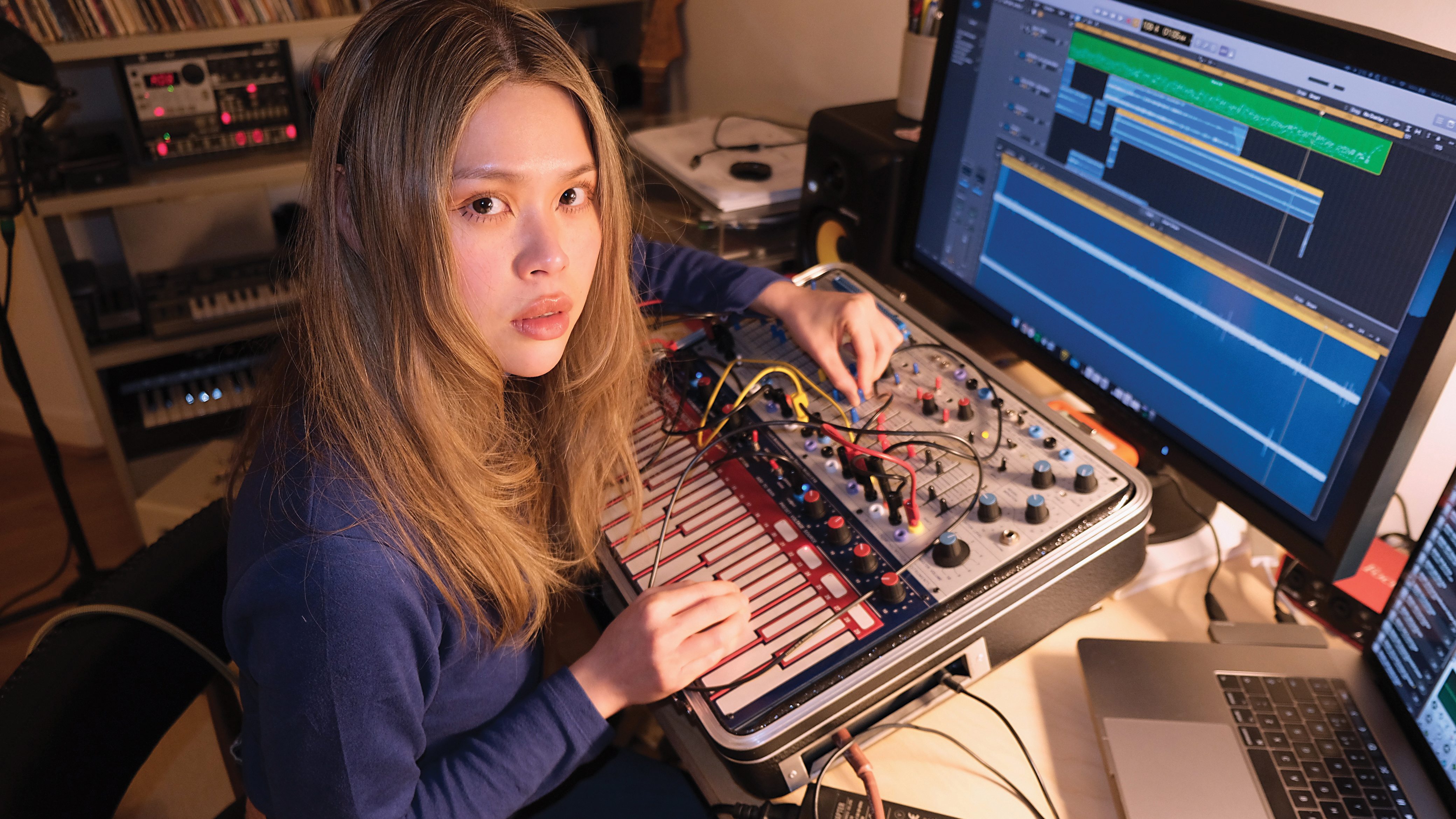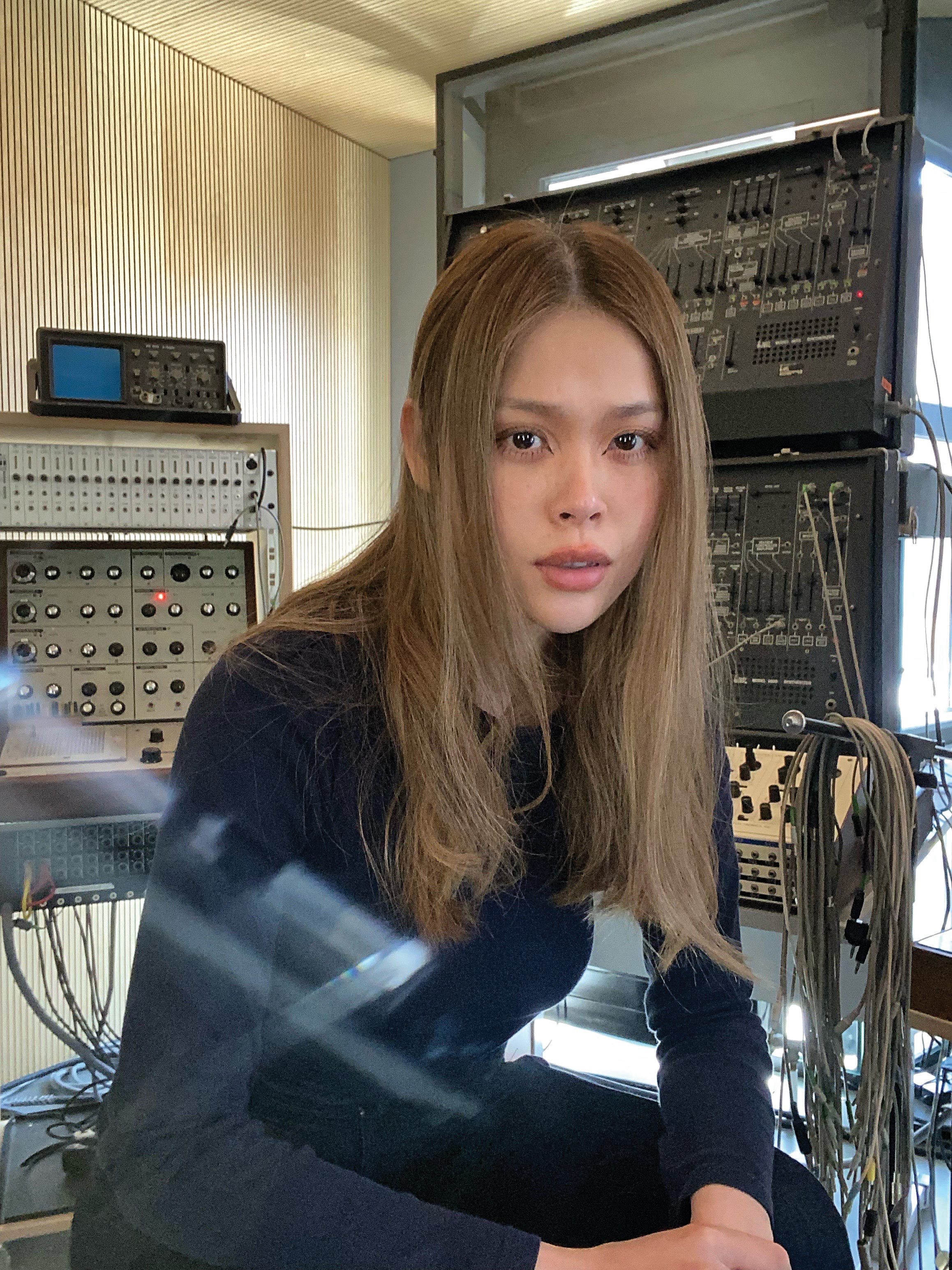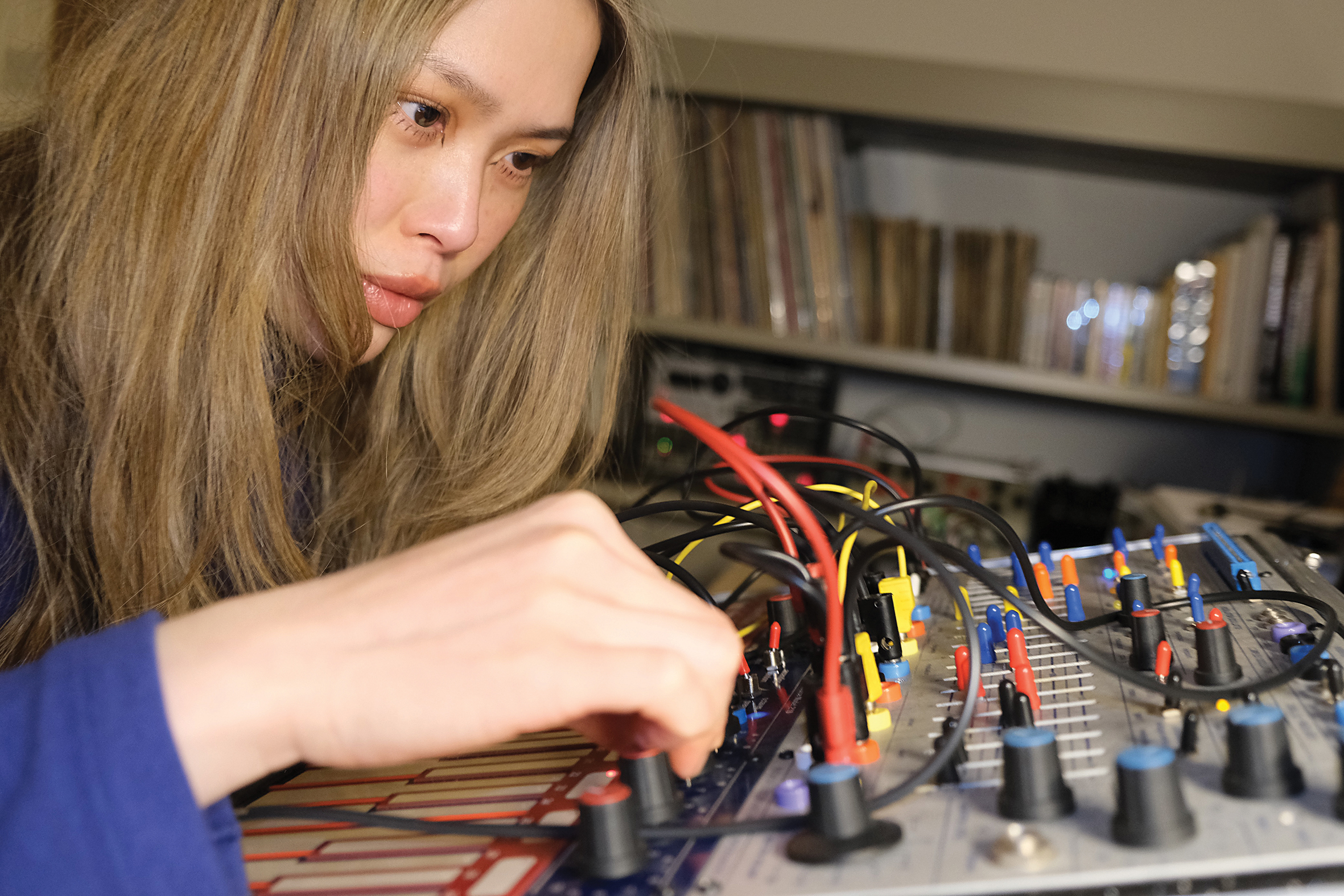Suki Sou: "Making a living from music is like trying to compose a symphony on a calculator"
Musician, sound designer and radio presenter Suki Sou on rejecting perfection, sampling jelly and the gear behind her unique blend of 'neo-morning electronica, kosmische and proto-techno'

Suki Sou was born in Macau, to a Burmese father and half-Japanese, half-Chinese mother whose philosophy when bringing Suki up was very much to throw her in at the deep end.
“My parents sent me to a Catholic boarding school in Berkshire to study when I was eight years old,“ she tells us. “I travelled to the UK on my own with just a dictionary; my mother’s theory was that I needed to learn the language by myself, without anyone’s help.”
This DIY attitude stuck, and with some influence from her electronics engineer father, Sou developed a fascination with synths and software. She has now married some of the best of both into a jaw-dropping studio in which she composes an eclectic mix.
It’s music that she describes as ‘neo-morning electronica, kosmische and proto-techno’. She has a refreshing ‘no rules’ philosophy, doesn’t strive for perfection (“it can blind the bigger picture”) and has some of the best advice for budding producers that we’ve ever seen. Read on for advice on the ‘minefield’ that is Pure Data, and recording the thud of soft jelly.
How did you start out in music in the first place?
“It all started with my mother’s encouragement to learn the piano for its cognitive benefits [laughs]. But once I got into music, I got really into sound and how it could take me places. I started messing around with field recordings, foley and electronic instruments to create a sonic palette that puts the listener right in the middle of the action.
“Through my music, I aim to capture the often-overlooked sounds of our world, such as the soft thud of jelly falling on the floor or the space echo in an empty bowl. I want to create a world that encourages people to tap into a realm of sensory experience that they may have previously overlooked, and to provide a listening experience that they may have never encountered before.
When and how would you say you became successful, or at least able to make a living from music?
Want all the hottest music and gear news, reviews, deals, features and more, direct to your inbox? Sign up here.
“Making a living from music is like trying to compose a symphony on a calculator – it’s a delicate balance that requires patience, persistence and a willingness to take risks. I am grateful for the opportunities that have come my way through my sound design work. The key to a sustainable career is being adaptable, taking on new challenges, and staying true to your vision. It’s a bumpy road but the reward of having the freedom to experiment and ultimately be able to share what you do with others is priceless.”

What is your overall philosophy or approach when it comes to music?
“I try my best to balance precision and intuition, fuelled by curiosity. I know that chasing perfection can blind the bigger picture, so, I trust my gut and let the music do the talking. Attention to detail is key, but less can also be more.”
When and how did you discover the route to computer music-making and how has it changed the way you work?
“I was determined to break free from the constraints of relying on others to create the music I wanted. It all started with a group of Japanese friends who introduced me to the innovative sounds of Aphex Twin, Broadcast, Prefuse 73, Four Tet and all the artists on Warp Records back in the early 2000s. Inspired by their creative process, I dove headfirst into learning and experimenting on my own with a Korg EM-1, and the rest is history.”

Tell us about some of the gear that you have in your studio…
“I have a few synthesizers, sequencers and drum machines that I use frequently, including a Korg EM-1 drum machine, Buchla Easel, Knas Ekdhal Moisturizer, Moog Mother 32, Korg Minilogue and SQ1, Casio 403 drum machine and Bastl Softpop 2. To manage everything, I’ve hooked it all up through my Soundcraft 16 Channel mixer, Focusrite interface and my MacBook. I also have an array of plugins, pedals and MIDI controllers.”
Can you tell us a bit more about these plugins?
“When it comes to my favourite plugins, there are so many amazing options out there that it’s hard to choose just a few. However, here are five that I find myself returning to time and time again, each with their own unique features and capabilities.
“Arturia V Collection. This bundle is an absolute powerhouse, packed full of amazing synthesizers, effects and more. I love the versatility of the instruments, from the classic sounds of the Synthi V and the Modular V to the modern capabilities of Pigments and the Analog Lab. With so many amazing options at my fingertips, I can easily create the perfect sound for any track.
“Cherry Audio ARP 2500. This is a virtual emulation of the classic analogue synth, and it sounds absolutely incredible. The attention to detail is truly remarkable, with every knob and switch accurately modelled to recreate the sound and feel of the original instrument. Whether I’m creating evolving pads, gritty basslines or otherworldly soundscapes, the ARP 2500 is an essential tool in my arsenal.

“Pure Data. I’m still learning a lot, but I’m excited to say that this has made it onto my list of go-to tools. It’s an open-source visual programming language for audio and video processing that lets me create my own custom patches and algorithms. I’m amazed by how complex it is and how much control it gives me over the sound and the signal flow. It’s been a great resource for designing new sounds and experimenting with different processing techniques.
“Spitfire Audio LABS. This series is an absolute gem. It is a free collection of high-quality virtual instruments, featuring everything from strings and pianos to experimental soundscapes and beyond, with every sample carefully recorded and processed to create a truly immersive and expressive playing experience. And did I mention that it’s free?!
“Puremagnetik plugins. These are also some of my favourites. Their offerings range from classic analogue emulations to cutting-edge granular synthesizers, and each one has been packed full of unique features and capabilities. I also love the versatility and the fact that they’re constantly releasing new and innovative tools for musicians and producers to explore with.”
Do you ever collaborate with other producers?
“I haven’t collaborated with anyone on this project, but I’ve worked with a number of other musicians over the years. Collaborating can be a challenging but rewarding experience. It requires a lot of communication and compromise, but it can also lead to unexpected and exciting results.”
How do you tend to start a track?
“I often begin by experimenting with a variety of sounds and textures using my collection of synthesizers and effects pedals. Once I find a combination that speaks to me, I build upon it with different arpeggios in MIDI and custom patches created through Logic Pro X or software like Max/MSP and Pure Data for intricate control.
“I then layer in additional sounds using hardware like the Buchla Easel or Moog Mother 32 to add warmth and depth, and incorporate field or foley recordings for added motion, and of course, lots of VSTs! Through the use of EQ and compression, I carefully sculpt and refine each individual element to create a cohesive and polished final product.”

How do you know when a track is done?
“Oh my… Finishing a track can be a daunting task, but it’s all about learning to trust your instincts and embracing the process. I draw inspiration from Pauline Oliveros’ deep listening practice, taking time to fully immerse myself in the music and allowing it to speak to me on a deeper level. Sounds so serious! Sometimes, this means taking a step back and coming back to it with fresh ears or taking a break from music altogether.
“I firmly believe that simplicity is key when it comes to completing a track. Rather than overproducing, less is often more, and knowing when to stop tweaking and refining is crucial. Follow your intuition to experiment but also know when it’s time to let go and move on to the next project. And above all, acknowledging that music is a journey. We’re all gonna die anyway, enjoy the process and let the sound take you where it wants to go.”
Can you talk us through at least one of your production tricks or processes?
“One of my favourite tricks would be to use repetition and variation to create a sense of movement and progression. I’ll often start with a simple pattern or motif, and then gradually introduce new elements or variations on that theme. I find that this approach really allows me to create an environment that is both hypnotic and engaging.”
What’s on your gear wishlist?
“I’m currently on a mission to build my own Buchla 200e system. I’ve also got my eye on an ARP 2600 FS, and if I ever have the opportunity, I’d love to add the EMS VC3S to my collection. In the meantime, I’m scouring Reverb and eBay for a tape recorder and a vintage Tascam M-208 or a SoundCraft 32-Channel mixer.”

What would you like to see developed in terms of production technology?
“One thing that really gets me excited is the use of AI in music production. With new machine-learning algorithms, we’re able to create models that can analyse and learn from huge amounts of music data, generating completely unique and original ideas, and performing alongside human musicians in real-time.
“Take Google’s NSynth, for example. It lets you create entirely new sounds by combining elements from existing ones in innovative ways. And then there’s Amper Music, which is an AI-driven platform that can produce custom music tracks in a matter of seconds. I think that as AI technology continues to develop, we’ll discover even more creative possibilities for music production, including automated arrangement, real-time performance, and new forms of sound synthesis.
When it comes to software and hardware integration, there’s still a lot of room for improvement
“Another area that really interests me is haptic feedback technology. This type of technology provides physical feedback in response to digital inputs, making it easier and more intuitive to manipulate sound. It’s already being used in things like video game controllers and iPhones, but I believe it has huge potential for music production, too. Haptic feedback could provide a more responsive way to control things like filter cutoff, LFO rate, and envelope decay, making performances more expressive and enhancing the creative process.
“When it comes to software and hardware integration, there’s still a lot of room for improvement. We’ve made some progress, such as being able to switch between different DAWs or control different synthesizers and effects pedals from a single interface. But I think there’s so much more that can be done to make the workflow more seamless and enhance creativity.”
Which track do you wish you’d produced and why?
“Patchwork by Laurie Spiegel is a track that truly exemplifies how innovation can drive emotive and expressive music. The composition’s four-voice structure is woven together through the intricate interplay of melodic motifs, rhythmic patterns, and compositional techniques. Blows my mind!”
What’s the best advice you’ve ever been given by anyone?
“I’ve learned a lot about the technical aspects of both playing live and working in the studio: invest in quality gear and software that you feel comfortable with! A reliable laptop or just simply a MIDI controller, along with a solid DAW and plugins, can make a huge difference in your ability to deliver a polished and engaging live performance.
The more tools you have at your disposal, the more creative and versatile you can be in the studio
“In terms of working in the studio, my advice would be to stay organised and efficient. Develop a system for organising your samples, presets, and project files, and make sure to back everything up regularly. Additionally, be willing to experiment with different software and hardware, and don’t be afraid to try out new techniques and workflows. The more tools you have at your disposal, the more creative and versatile you can be in the studio.
“From the music industry: definitely try not to feel limited by the conventional rules and expectations set by others. It’s important to carve your own path and not rely solely on others to make things happen for you. In today’s industry, with so many tools and resources available, it’s easier than ever to take matters into your own hands and create your own opportunities. Don’t be afraid to take risks.”
What else do you have planned for the future?
“My latest release is a deep listening-focused mini-album called Notes On Listening. It’s a blend of neo-morning electronica, kosmische and proto-techno, with purified synthesized babble and hydrated loops. I hope that listeners will find it to be both nostalgic and forward-thinking. I am also currently focused on writing the next record, but would love to do some residencies in Europe this year to challenge myself in new ways.”
Notes On Listening is out now on Curious Music.


Andy has been writing about music production and technology for 30 years having started out on Music Technology magazine back in 1992. He has edited the magazines Future Music, Keyboard Review, MusicTech and Computer Music, which he helped launch back in 1998. He owns way too many synthesizers.
